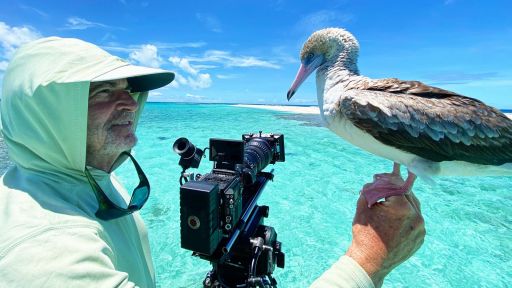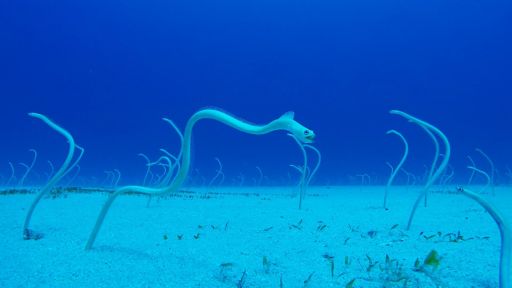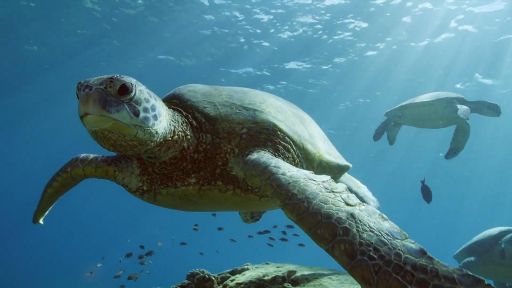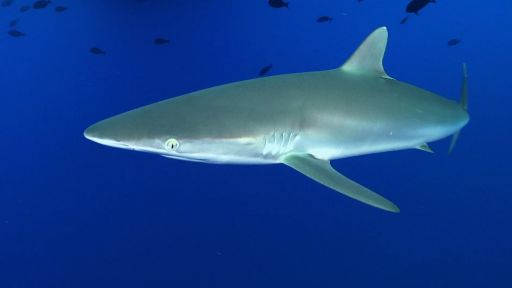Under the waves and tropical sun, each of Hawaii’s volcanic islands host a unique ocean landscape teeming with biodiversity. But one predator reigns supreme – the shark. With 40 species of shark calling these warm waters home, scientists are seeing new animal behavior around every corner. Whitetip reef sharks “sleep” in tight volcanic tunnels. In the deep water, everything is on the menu for the hunting Tiger shark, from birds to Humpback whales. Hopping from island to island, uncover surprising moments of cooperation, rarely seen hunting tactics and striking insights into these predators of the world’s paradise.
Buzzworthy Moments:
- A school of small mackerel called “Akule” gather in the tens of thousands to form a tight bait ball in order to protect themselves from predators, most notoriously the sharks of Hawaii. But sometimes increasing their profile only attracts more lethal attention.
- Off the island of Oahu lies an undersea prairie that is home to hundreds of Hawaiian garden eels. Shy creatures found only in Hawaiian waters, these eels only emerge from their burrow to eat zooplankton. They will spend their lifetime in the same spot, trying to avoid the eyes of roaming sharks.
- A Tiger shark’s favorite treat is a Humpback whale calf. Humpback calves nurse for at least a year, while the mother whales try their best to keep their newborns close. But Tiger sharks are clever and stealthy, and one, in particular, takes advantage when the calf must go to the surface to breathe. The calf barely escapes a gruesome fate.
Noteworthy Facts:
- While some species of sharks do need to swim constantly, Whitetip reef sharks are one of the few shark species that don’t need to swim in order to breathe. They can lie on the ocean floor to rest.
- Whale sharks are the world’s largest fish and can grow as big as 40 feet long.
- Manta rays are cousins to sharks, with wing spans that can reach 29 feet. Manta rays are born rolled up, and then unfurl to six feet.
- Sandbar sharks live in Hawaii year-round. Male Sandbar sharks hunt together, but the females travel alone.




